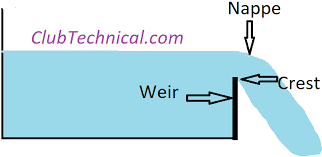WATER TREATMENT PROCESS
Water
Treatment
Public drinking water
systems use different water treatment methods to provide safe drinking water
for their communities. Public water systems often use a series of water
treatment steps that include coagulation, flocculation, sedimentation,
filtration, and disinfection.
Water treatment steps
Coagulation
Coagulation is often the first step in water
treatment. During coagulation, chemicals with a positive charge are added to
the water. The positive charge neutralizes the negative charge of dirt and
other dissolved particles in the water. When this occurs, the particles bind
with the chemicals to form slightly larger particles. Common chemicals used in
this step include specific types of salts, aluminum, or iron.
Flocculation follows the coagulation step.
Flocculation is the gentle mixing of the water to form larger, heavier
particles called flocs. Often, water treatment plants will add additional
chemicals during this step to help the flocs form.
Sedimentation
Sedimentation is one of the steps water
treatment plants use to separate out solids from the water. During
sedimentation, flocs settle to the bottom of the water because they are heavier
than water.
Filtration
Once the flocs have settled to the bottom of the
water, the clear water on top is filtered to separate additional solids from
the water. During filtration, the clear water passes through filters that have
different pore sizes and are made of different materials (such as sand, gravel,
and charcoal). These filters remove dissolved particles and germs, such as
dust, chemicals, parasites, bacteria, and viruses. Activated carbon filters
also remove any bad odors.
Water treatment plants can use a process called
ultra filtration in addition to or instead of traditional filtration. During
ultra filtration, the water goes through a filter membrane with very small
pores. This filter only lets through water and other small molecules (such as
salts and tiny, charged molecules).
Reverse osmosis external
icon is another filtration method that removes additional
particles from water. Water treatment plants often use reverse osmosis when
treating recycled water external icon (also
called reused water) or salt water for drinking.
After the water has been filtered, water
treatment plants may add one or more chemical disinfectants (such as chlorine, chloramines,
or chlorine dioxide) to kill any remaining parasites, bacteria, or
viruses.
In addition to or instead of adding chlorine, chloramines,
or chlorine dioxide, water treatment plants can also disinfect water
using ultraviolet (UV).
Water may be treated differently in different
communities depending on the quality of the source water that
enters the treatment plant. The water that enters the treatment plant is most
often either surface water or
ground water.
Surface
water typically requires more treatment and filtration than ground water
because lakes, rivers, and streams contain more sediment (sand, clay, silt, and
other soil particles), germs, chemicals, and toxins than ground water.




Very useful
ReplyDelete